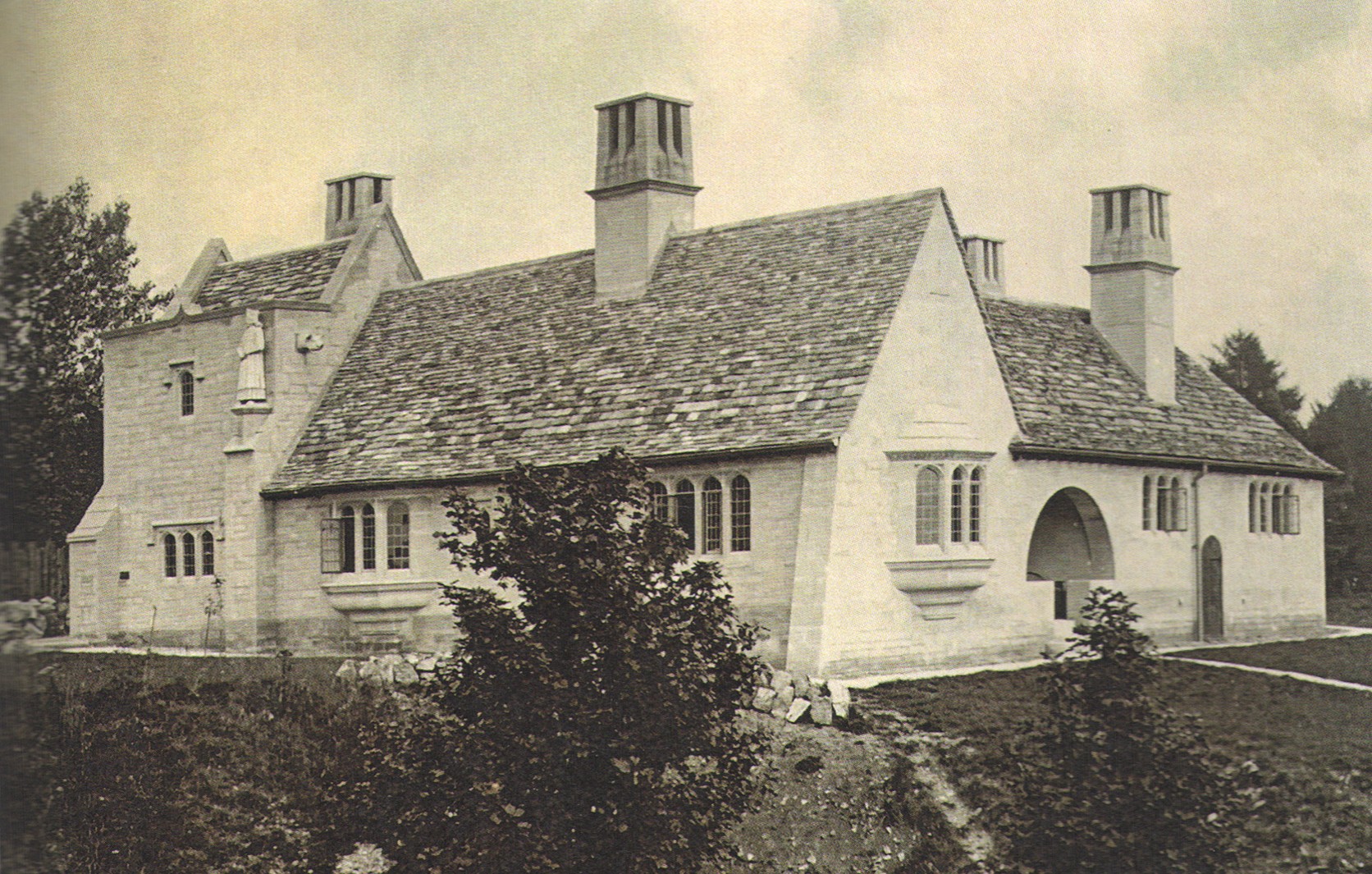
LODGE STYLE.
Shaft Road,
Combe Down,
near Bath,
Avon.
1909
For T. Sturge Cotterell.
The client was a quarry-owner,
therefore the house was made of stone.
J. Brandon-Jones: "Cotterell had wanted something reminding him of Merton College, Oxford,
so Voysey designed him a miniature college quadrangle."
Joanna Symonds: "The house
is built round a courtyard like a miniature monastic or college building.
The walls are of stone from Bath Stone Firms Ltd (Cotterell's business) and the
roofs are of slate.
The windows have stone mullions and iron casements.
The interiors have unplastered walls and white, coved plaster ceilings.
There is a photograph of an interior at the RIBA."

Photo shortly after completion in 1909
(RIBA Drawings Collection),
Voysey, ‘Symbolism in design’, 1930
(unpublished MS, RIBA collection, SKB458/2),
published in The Orchard
(no.11, 2022), p.19.
,%20photo%20courtesy%20of%20John%20Trotter.jpg)
Lodge Style, Coombe Down, photo courtesy of John Trotter
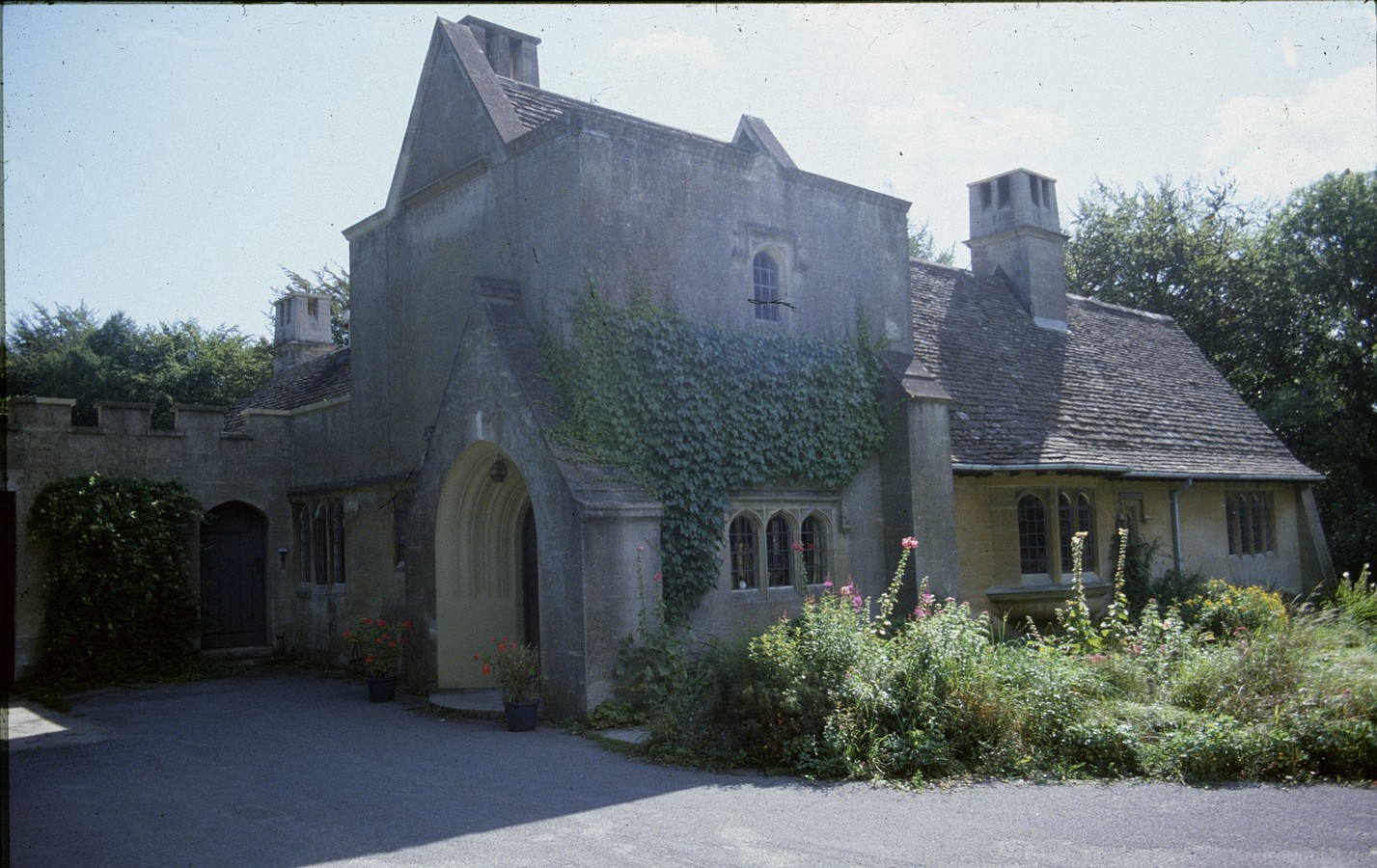
Lodge Style, Coombe Down, photo courtesy of John Trotter
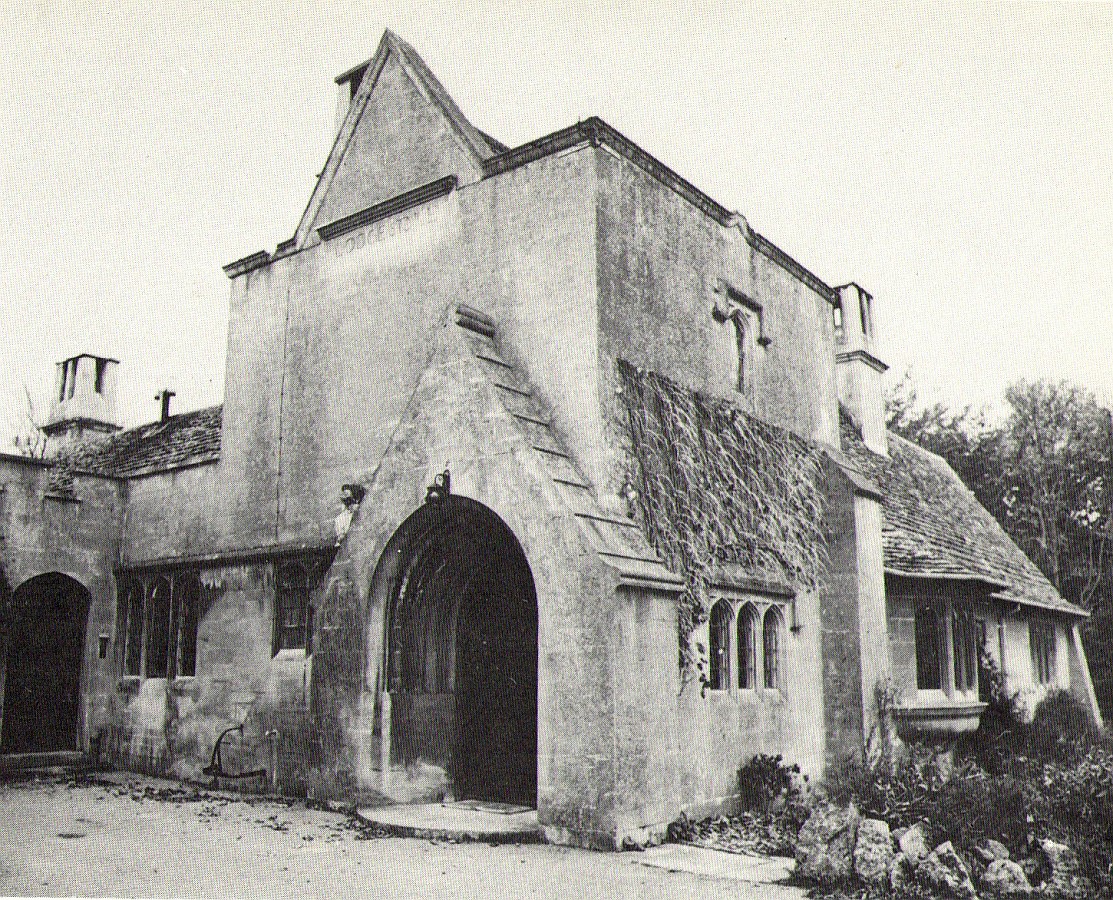
Photo Duncan Simpson
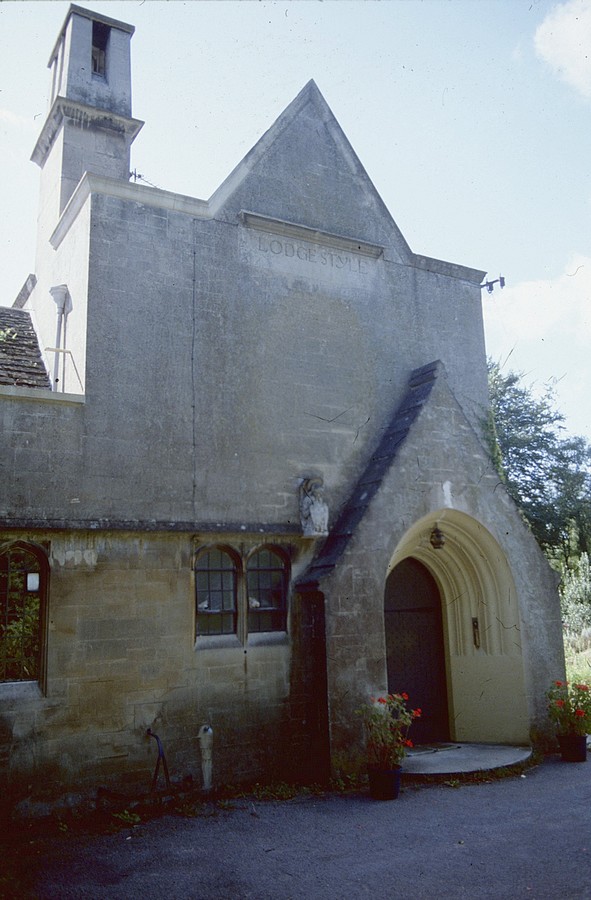
Lodge Style, Coombe Down, photo courtesy of John Trotter
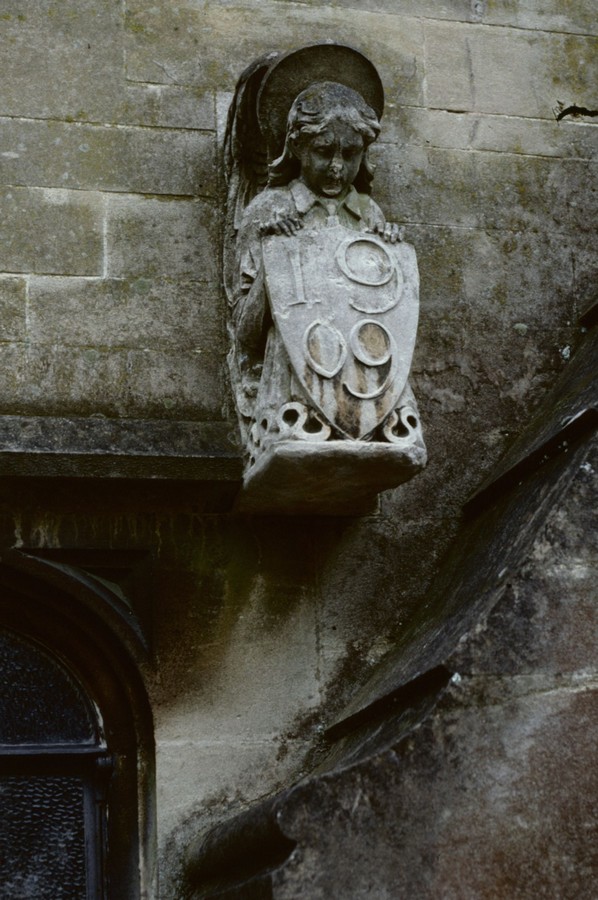
Lodge Style, Coombe Down, photo courtesy of John Trotter
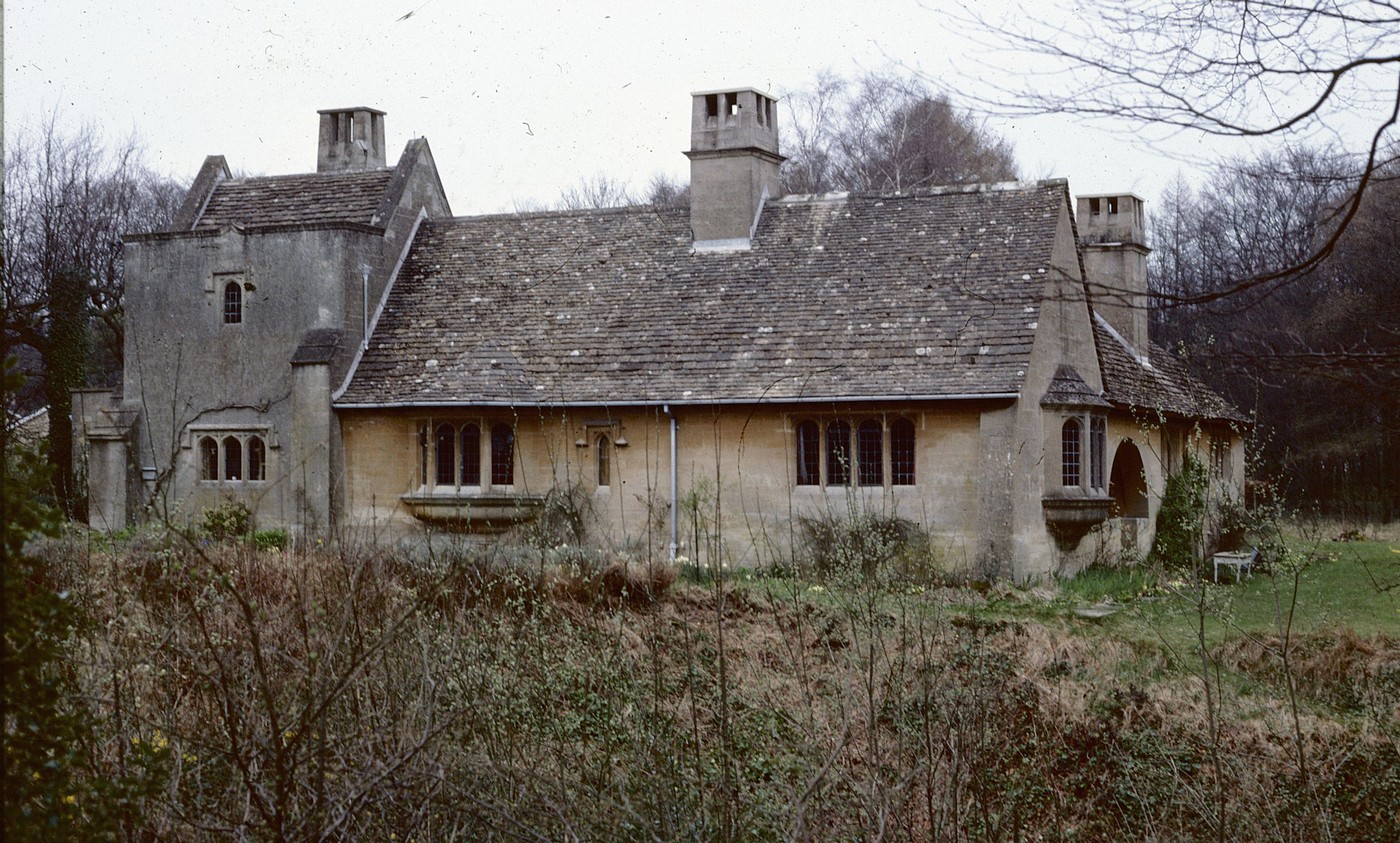
Lodge Style, Coombe Down, photo courtesy of John Trotter

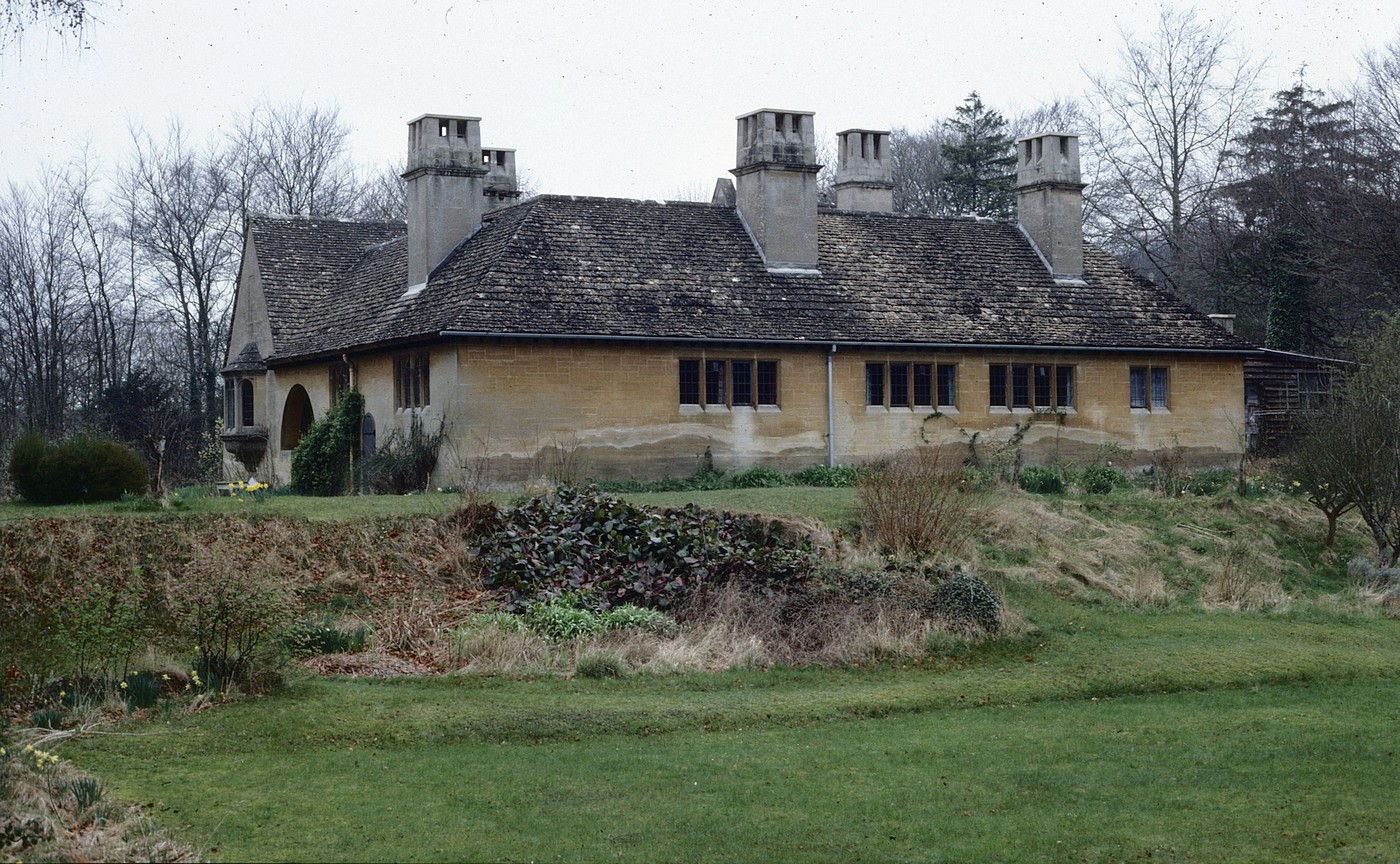
Lodge Style, Coombe Down, photo courtesy of John Trotter
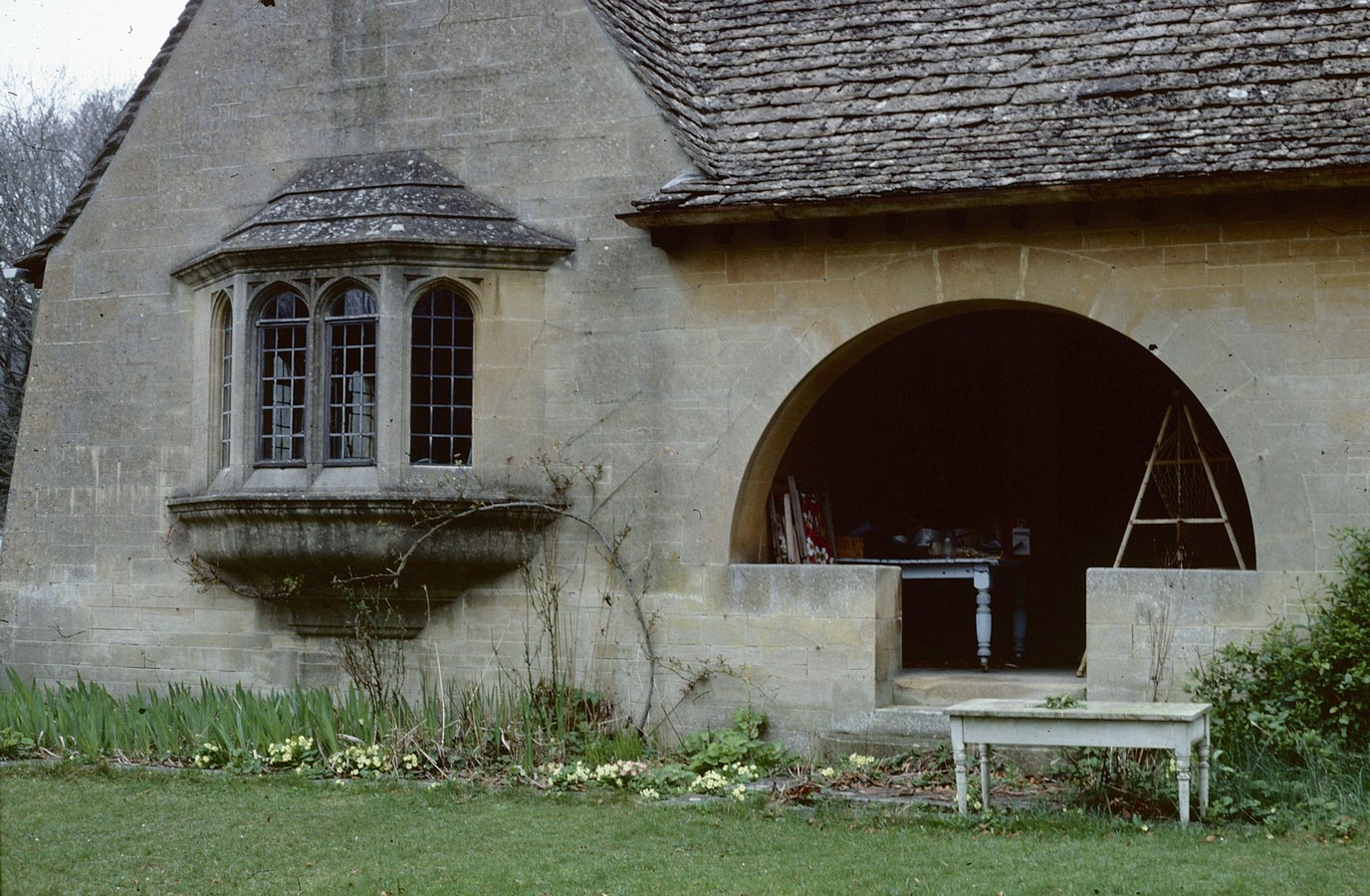
Lodge Style, Coombe Down, photo courtesy of John Trotter
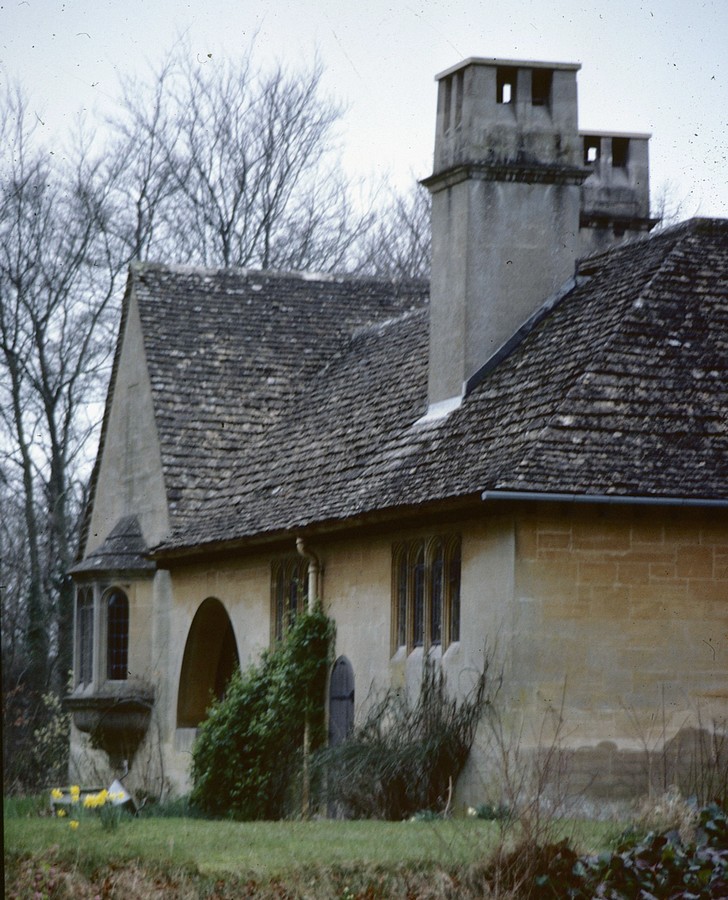
Lodge Style, Coombe Down, photo courtesy of John Trotter
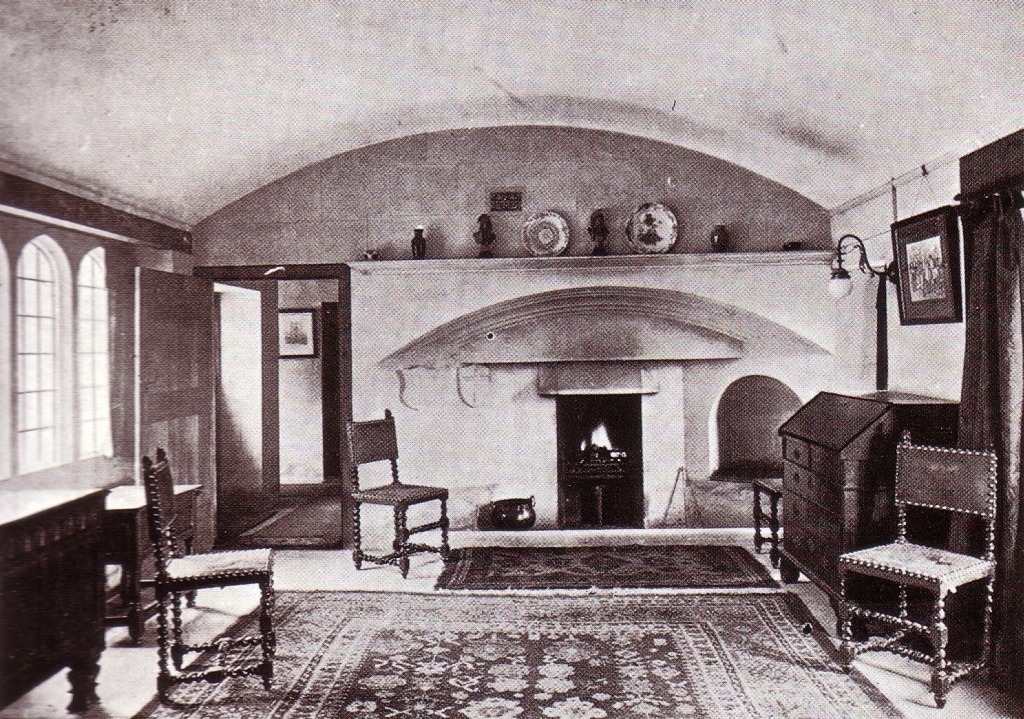
Photo
published in Stuart Durant, CFA VOYSEY, Architectural Monographs No 19, p.97.
RIBA Photographs Collection
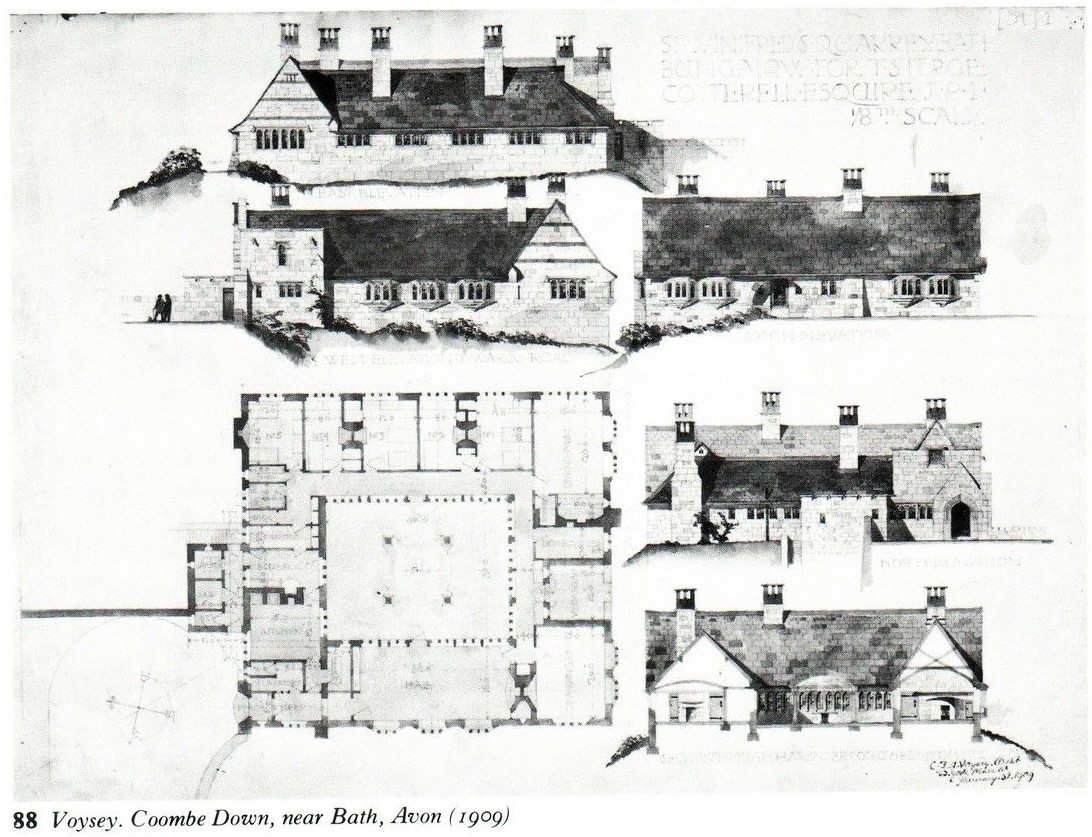
Lodge Style; the first
scheme.
Not executed in this form.
Published in: Peter Davey, Arts and
Crafts Architecture, p.88
RIBA Drawings Collection.

Section
RIBA Drawings Collection.
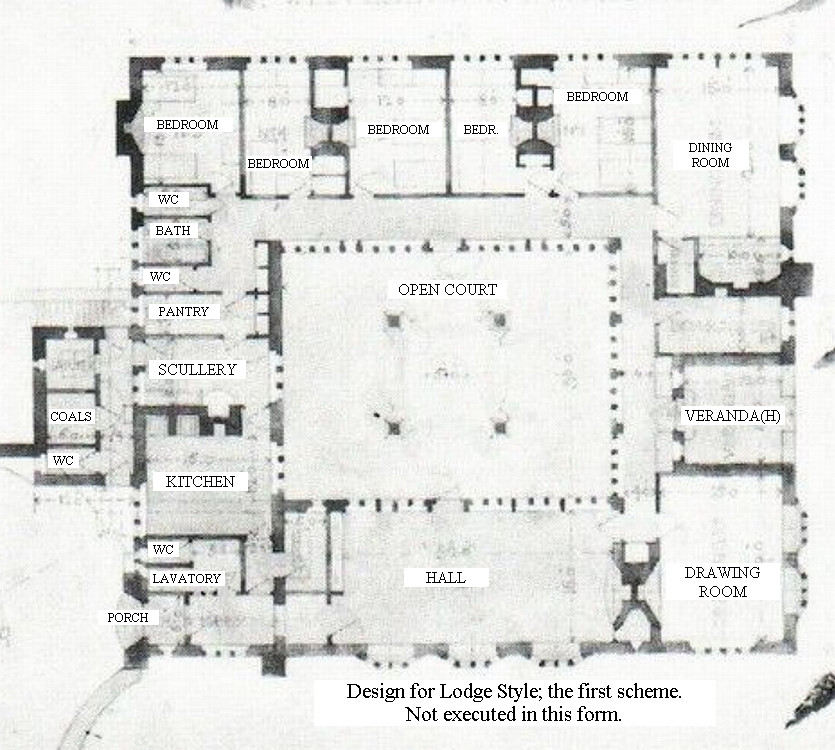
As Duncan Simpson
mentioned, the first scheme of a Collegiate Bungalow style,
to be built around a courtyard or, more properly in this case, quadrangle, forty
feet by thirty feet,
was whittled down so that as built the quadrangle has become a cramped 23 feet
by 21 feet (approximately).
RIBA Drawings Collection.
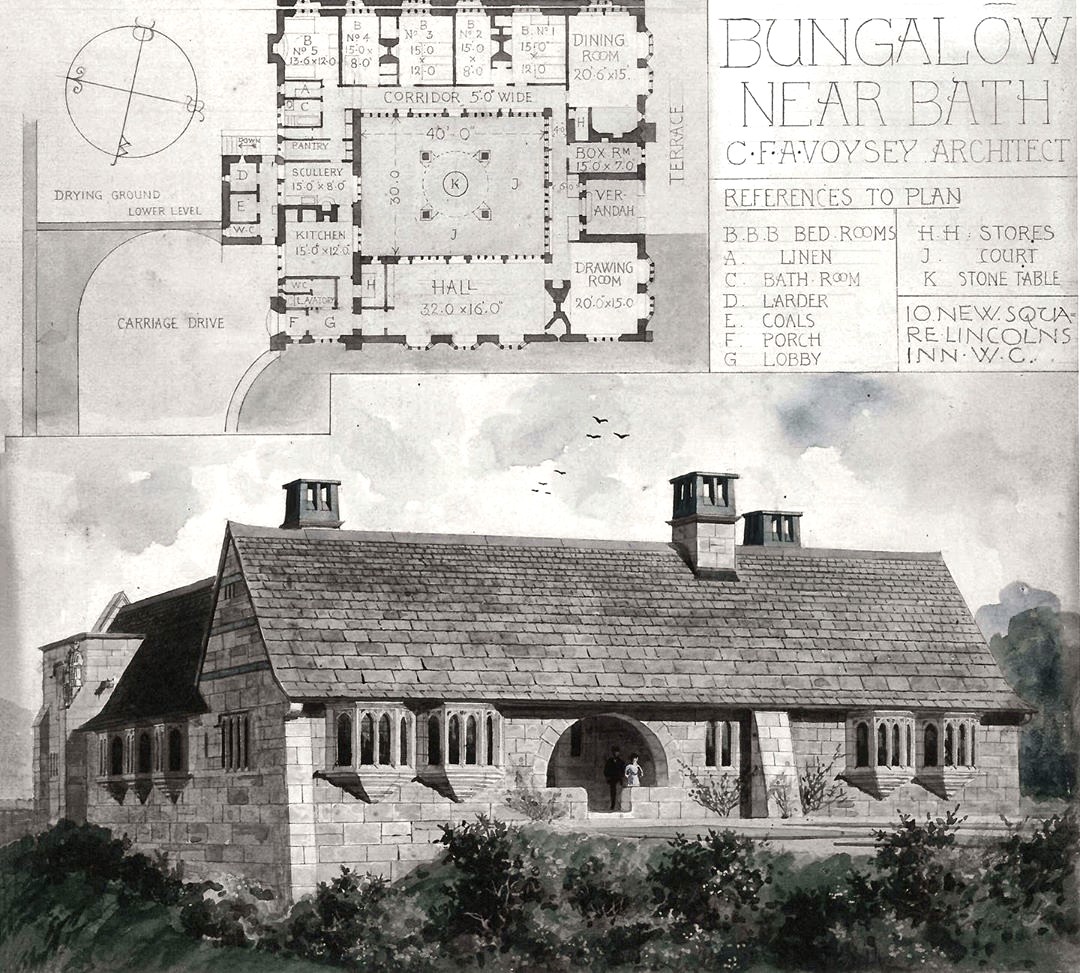
Lodge Style, image on picuki.com,
RIBA
Drawings Collection

First scheme, not executed in this form.
Elevations and Ground plan published in The
British Architect, 13th August 1909.
RIBA Drawings Collection.
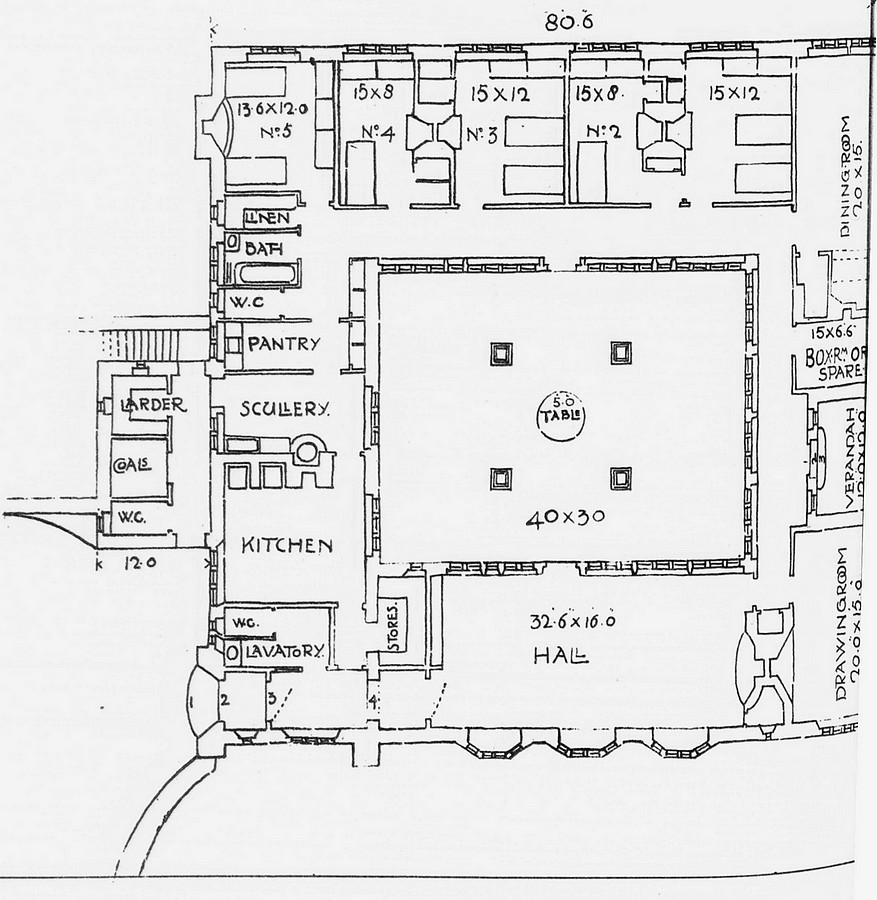
First
scheme, not executed in this form.
Ground
plan published in
The British Architect,
13th August 1909.
RIBA Drawings Collection.
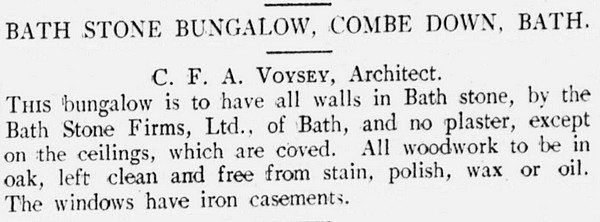
Text published in The British Architect, 13th August 1909, p.111.
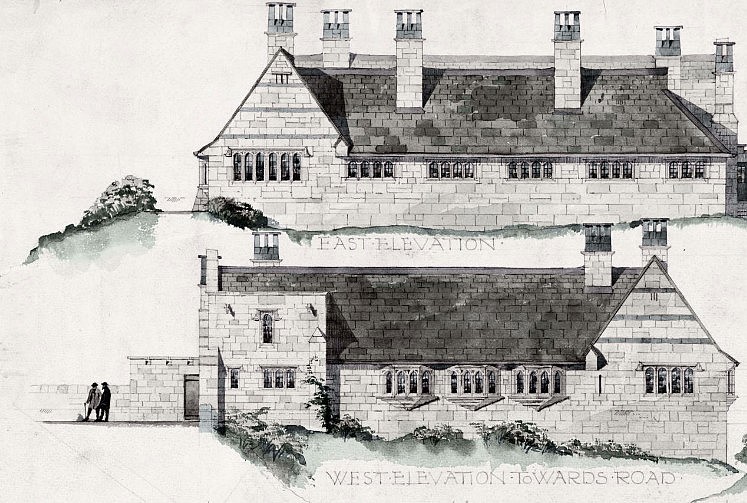
East elevation and West elevation (RIBA Drawings Collection).
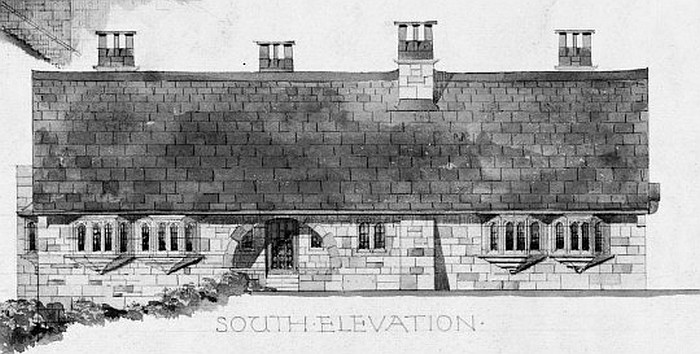
South elevation (RIBA Drawings Collection)
____________________________________
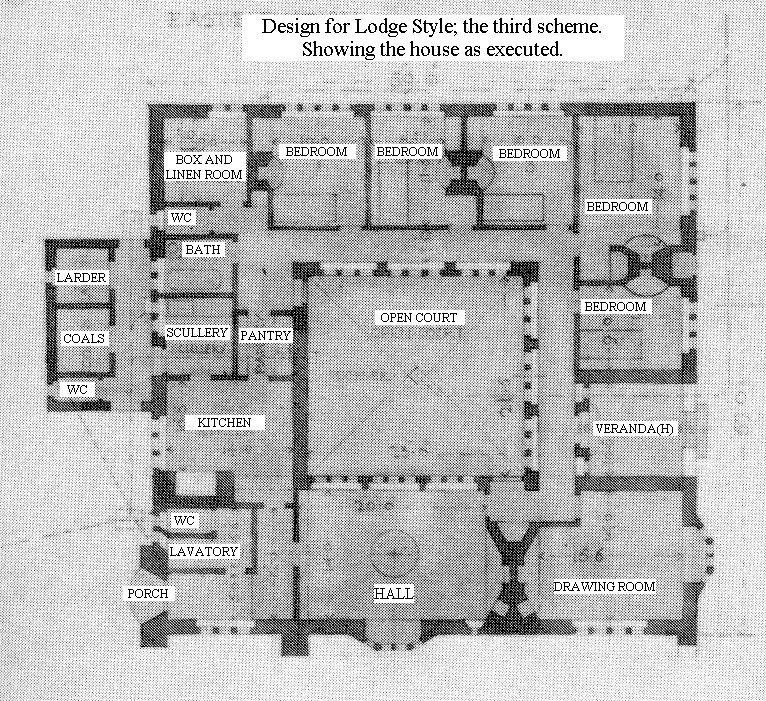
Ground plan
for the third scheme, showing the house as executed.
RIBA Drawings Collection.
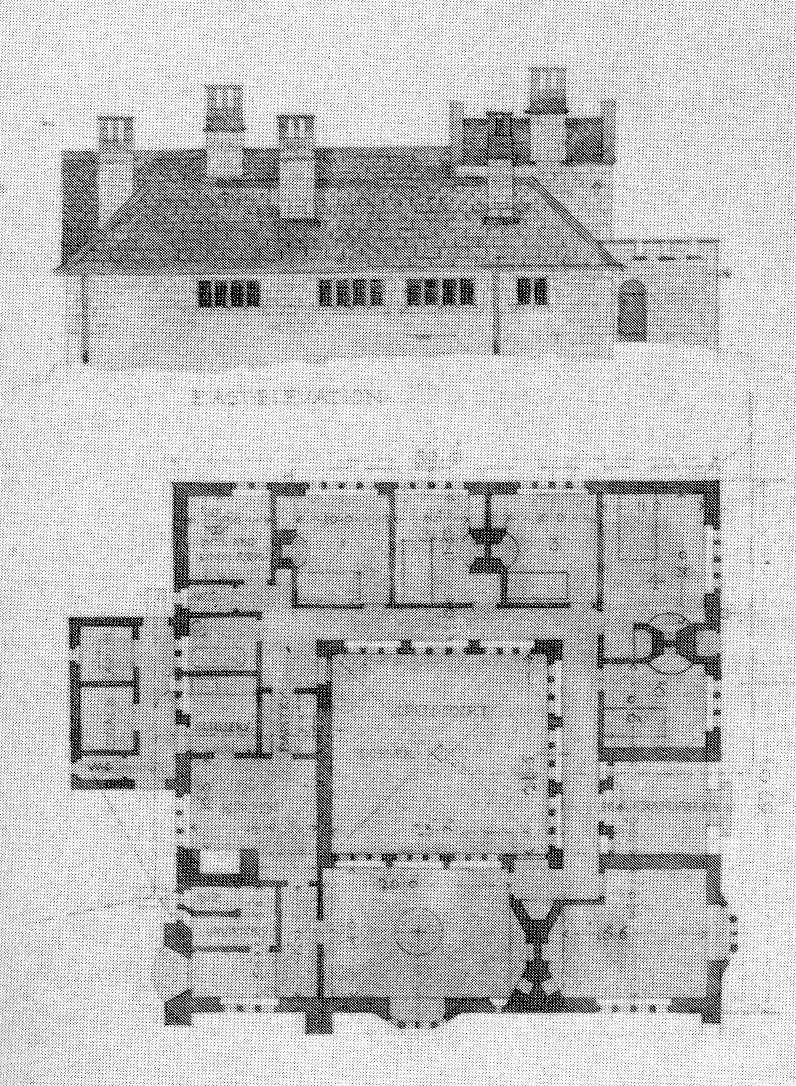
Lodge Style,
third scheme, showing the house as executed.
RIBA Drawings Collection.
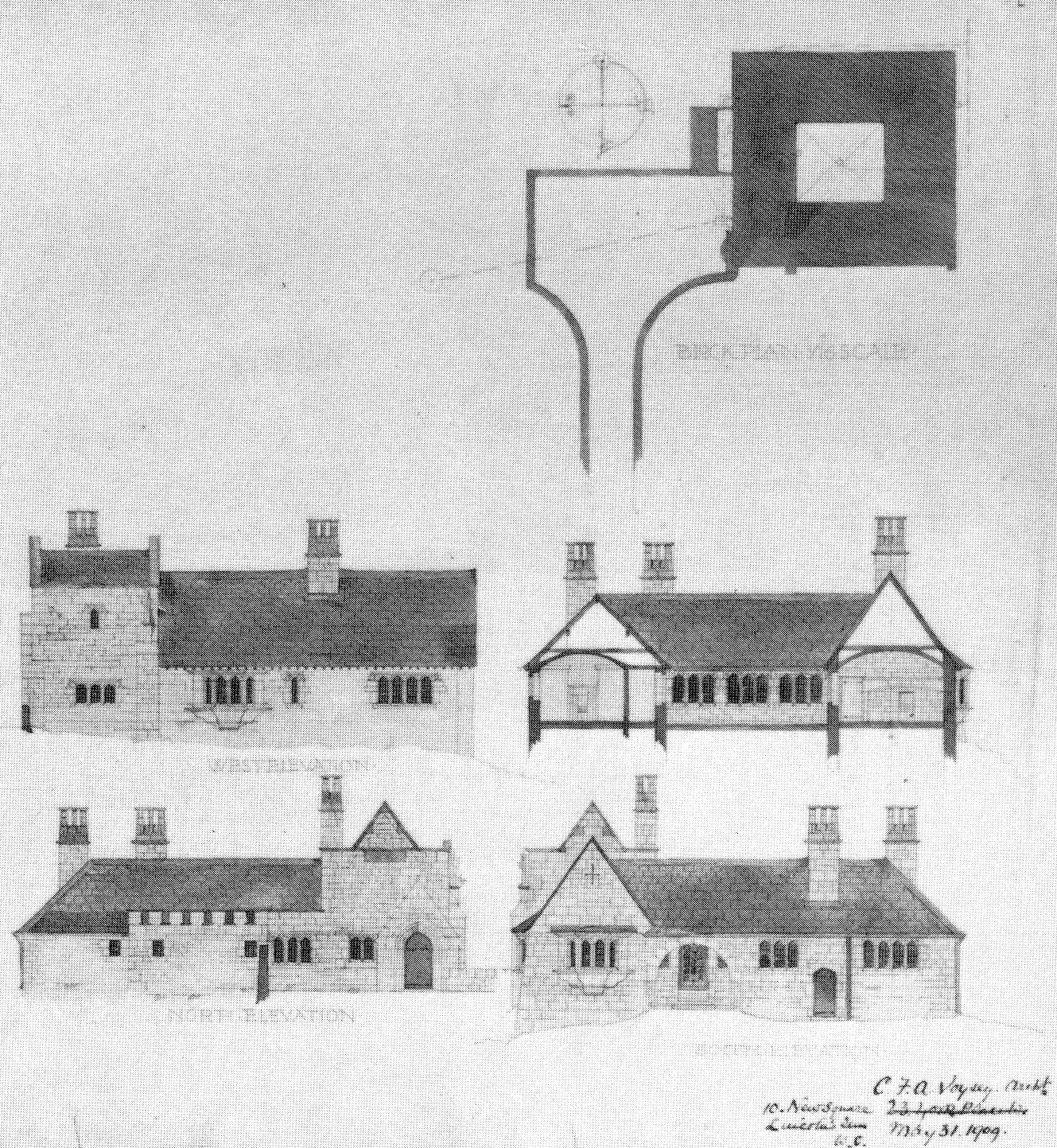
Lodge
Style, third scheme, showing the house as executed.
RIBA Drawings Collection.
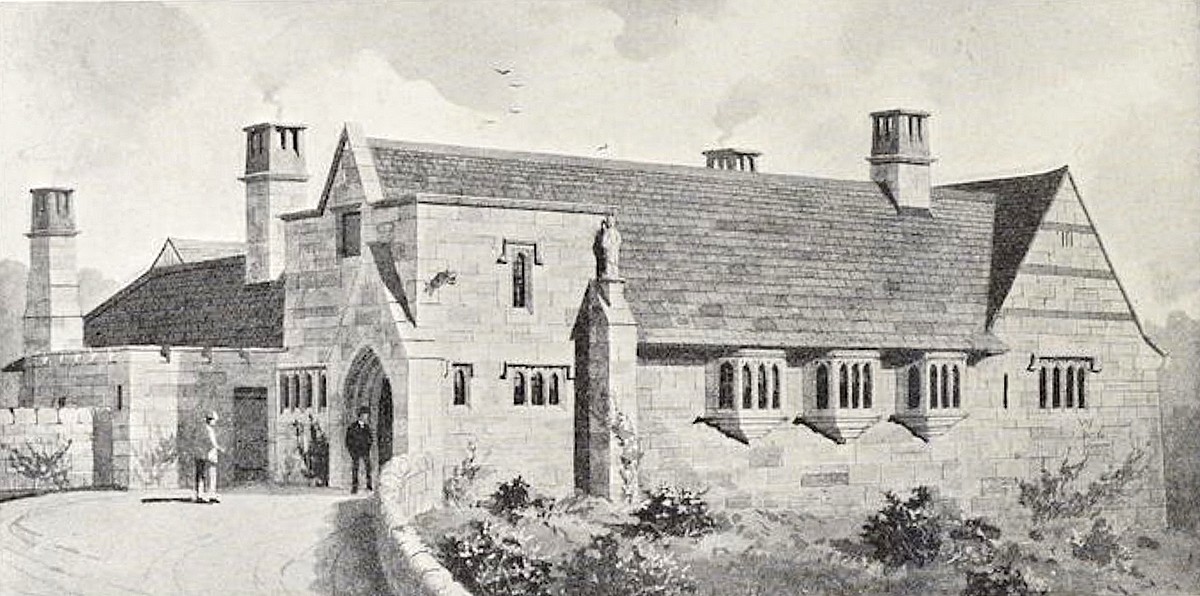
Lodge Style, published in The Studio Yearbook 1910.

Lodge Style, published in The Studio Yearbook 1910.
The entry in Pevsner's Somerset: North and Bristol (with Andrew Foyle, 2011) reads:
BATH: OUTER AREAS. LODGE STYLE, Shaft Road, by C.F.A. Voysey, 1909, the most important C20 house in Bath and one of his most significant late works. Single-storeyed round a small courtyard, a typical Voysey grouping. The collegiate Gothic details are more revivalist than his early work. Inside, large open hearth, oak fittings, vaulted ceilings, and leaded casements.
Descripton on Historic England
SHAFT ROAD, Combe Down
656-1/68/2003 (East side) Lodge Style 11/08/72 II*
Detached house. 1909,
by Charles F. A. Voysey. MATERIALS: Limestone ashlar, stone Cotswold slate roof. PLAN:
Courtyard house, with entrance porch tower to north-west corner, garage wing
projects at north side. EXTERIOR: Single storey, leaded casement windows with
moulded stone mullions and four-centred heads, entrance front has broad plain
tower with wide gabled stone porch over pointed arch with triple wave mould, to
high plain splayed plinth, and studded plank door with decorative strap hinges.
To left are three and two-light windows, under moulded drip course stopped to
carved angel, to right, carrying shield with date 1909. Further left lower unit
with crenellated parapet, and return wall, also crenellated to plank door in
four-centred head, and garage door. Remainder of building has steep roof on
sprocketted eaves. Return right has porch tower with clasping buttress to right,
and projecting porch buttress to left, single light at first floor and
three-light below, both with stopped drips. Main range has oriel with
one:two:twelve-lights to stone roof and moulded eaves and deep stone bracket,
single and four-light. Outer gabled end raking buttress, flush with return face
and taken up to eaves height: typical Voysey touch. South front has ventilation
slit in gable over oriel with one:two:one-lights. To right wide arched opening
to deep open lobby on three + three steps, with plank doors in rear wall to
corridor. To right three and four-light windows and low arched door, returned to
hipped end. East front more restrained, with four windows, to plain square
heads, and to hipped return. Four large square stacks, each with plain cornice
and high upper stage with flat cap on vertical slits. INTERIOR: Not inspected.
Central courtyard with stone table in centre; dining and drawing rooms with
segmental vaulted ceilings and large open hearths to west, bedrooms to east and
south, services along north range. HISTORY: Designed for T. Sturge Cotterell,
Bath Alderman and owner of the Combe Down quarries; just as Ralph Allen's Prior
Park presented the quarry-owner with the chance to display the quality of his
goods, so Lodge Style was a flamboyant display of masonry. Its exposed position
on a ridge led to the compact, low design which emphasised warmth and enclosure,
and in which interior, exterior and setting are all cleverly integrated.
Hitchmough described the result as important as a testament to Voysey's
personal interpretation of Gothic principles. A notable private house of its
day, fusing Voysey's characteristically distinctive touch with a host of
historicist and vernacular references (inspired by the owner's Oxford college,
Merton), and showing the continuing possibilities of Bath stone as a building
material. It is also a very unusual building for the Bath locality, and one of
the very few fairly recent houses in the area by an architect of international
standing. Voysey's drawings are in the British Architectural Library (repro. In
Jackson, p.235).
SOURCES: 'Country Life', 8 April 1911, 9-11; Julian Orbach,
'Blue Guide to Victorian Architecture in Britain' (1987), 27; Neil Jackson,
'Nineteenth Century Bath. Architects and Architecture' (1991), 233-237; Wendy
Hitchmough, 'CFA Voysey' (n.d.), 204-5, 214-5.
Photographs and Drawings Courtesy of The Royal Institute
of British Architects.
Photographs, drawings, perspectives and other design
patterns
at the Royal Institut of British Architects Drawings and
Photographs Collection.
Images can be purchased.
The RIBA can supply you with conventional photographic or
digital copies
of any of the images featured in
RIBApix.
Link >
RIBA Drawings Collection: Lodge Style
Link >
RIBA Drawings Collection: all Voysey
Images
Link > www.artsandcraftsdesign.com (Photo and perspectives)
Link > www.britishlistedbuildings.co.uk
Link > 3D Model by Michael Alan
Link > www.voyseysociety.org
References:
- Peter Davey, Arts and Crafts Architecture: The Search for
Earthly Paradise,
224 pages,
Publisher: Architectural Press, London 1980,
>
Chapter 8 The Pathfinder, pp. 82-96.
(Chapter about Voysey) PDF
Wendy Hitchmough, CFA VOYSEY, London 1995, pp. 204-5, 214-5.
The British Architect, LXXII, 1909, pp. 111 & 114; LXXVII, 1911, p. 361.
The Builder, XCVIII, 1910, p. 264.
The Studio Yearbook, 1910, p. 82.
The Architect, CI, 1919, p. 54; CXVI, 1927, p. 219.
Duncan Simpson, C.F.A. VOYSEY an architect of individuality, London 1979.
> Return to Voysey Home page <